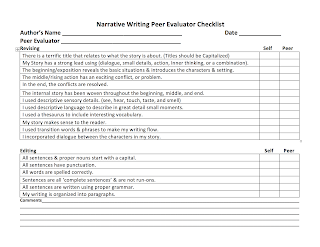Good Morning 6th Graders,
Today is an 'A' Day. Make sure you use the bathroom & sharpen your pencils. Check to see that you have everything you need for your morning classes.
Thank you
Mr. Trumble
ELA:
Do Now:
- Write tonight's homework down in your agenda
- Take out the 3 leads you wrote for your seed idea
Homework:
- Add dialogue & small details to your narrative
- Once you have added the lead, dialogue, and details, your writing should be at least 2 pages long.
Writers Workshop Session #5
Standards:
- W6.3 - Write narratives to develop real or imagined experiences or events using effective technique, relevant descriptive details, and a well structured sequence of events
- W6.4 - Produce clear and coherent writing in which the development, organization, and style are appropriate to task, purpose, and audience
- W6.5 -With guidance and support from peers & adults develop and strengthen writing as needed by planning, revising, editing, rewriting, and trying a new approach.
Part 1: Rehearsal - You Do:10 minutes
*Most writers don't just pick a story idea and then write the book; they get ready to write by rehearsing.
***Pick a new writing partner - someone you have not yet worked with***
**The Viper Story**
Partner 1: Tell the story that is your seed idea (DO NOT READ) I want to hear you using the same dramatic storytelling voice you use in the hallway, when something unbelievable has just happened to you and you bump into your best friend and tell them all about it.
Partner 2: Lean in and expect to get goose bumps!
As you tell your stories, you start to figure out what you want to show about your characters and how you want to make your partner react to certain parts of the story......That is exactly why we might story-tell our story before we put it on paper or make revisions to a draft.
Follow Up Whole Group:
- Does anyone want to share about the rehearsal you had with your writing partner?
- What did you notice about your story vs your writing?
- How was your story different from your writing?
- How can you use your rehearsal to help your writing?
Part 2: The Lead
With your partner share the leads that you have written for your narrative about a small moment in time.
Tips
- Be super supportive
- Help your partner notice where good work happened in their leads.
- Help your partner pick the lead, or combination of leads, that you think works best for the story they just told you.
Part 3: Zooming in on the Small Details & including dialogue
Some people think of work, especially hard work, as a negative thing, but we don't have to be those people.
The best writers are not just born with incredible talent. The people who become pros are people who figure out how to work at it.
"Genius is 1% talent and 99% hard work."
 |
| Albert Einstein |
*Successful Learners see hard tasks as challenges...
...They see failures as opportunities to learn.
Now, I want to teach you how to deliberately zoom in on the small details that you want to see in your own writing.
Original writing:
(Author has climbed a tree in a park even though her mother warned her not to)
"Don't look down, just keep climbing-you're almost to the top," Lydia urged. I swallowed and snuck one quick look down at her.
First attempt at zooming in on the small details:
Lydia was still standing at the bottom of the tree, holding my dark, blue sandals with one hand and shielding her eyes, with the other, as she looked up at me.
These are tiny details, but not something someone would notice who is stuck high up in a tree.
Second attempt at zooming in on the small details:
The tree swayed slightly, and I tightened my grasp on the trunk. A rough piece of bark dug sharply into my forearm, but I didn't dare move.
"I think I need help getting down," I shouted, my voice high and tight. I thought about my mother's clear warning to stay out of the trees that bordered the playground. This must be why.
"Hold on, " Bobby called. He circled slowly around the tree and then walked towards Lydia, talking to her in a low voice. I couldn't hear him over the rustle of the tree's leaves. Suddenly he grabbed Lydia's arm and pulled her away from the tree. "Run!" Bobby commanded, and they made a dash for the gate.
Writers, the author here has really tried the technique of zooming in on the small details. To do that the author really had to put herself back in the park and replay the scene in her head.
Your Action:
Look for places in your own narrative to practice this technique of zooming in on the small details of the moment. Make revisions to your original piece. You may write them in the margins or on another page of your ELA Notebook.
- Include adjectives to describe nouns.
- Insert details to describe precise actions
- Incorporate internal thinking
- Add dialogue to develop your characters.
- Tap into the reader's senses. (Sound, smell, feel, sight, & Taste)
Share: (If time) To celebrate today’s achievements, you will share your draft with a small group. When it’s your turn to read, don’t start until you have everyone’s eyes on you. Make sure to read it like gold with lots of expression. When it’s your turn to listen, try to lose yourself in the story you are about to hear. Try to see and feel this powerful small moment just as the writer tells it.












